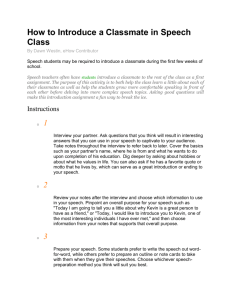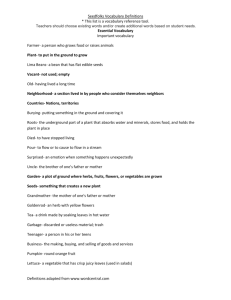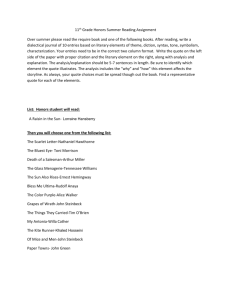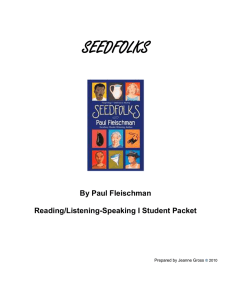Passing Notes for Literature
advertisement
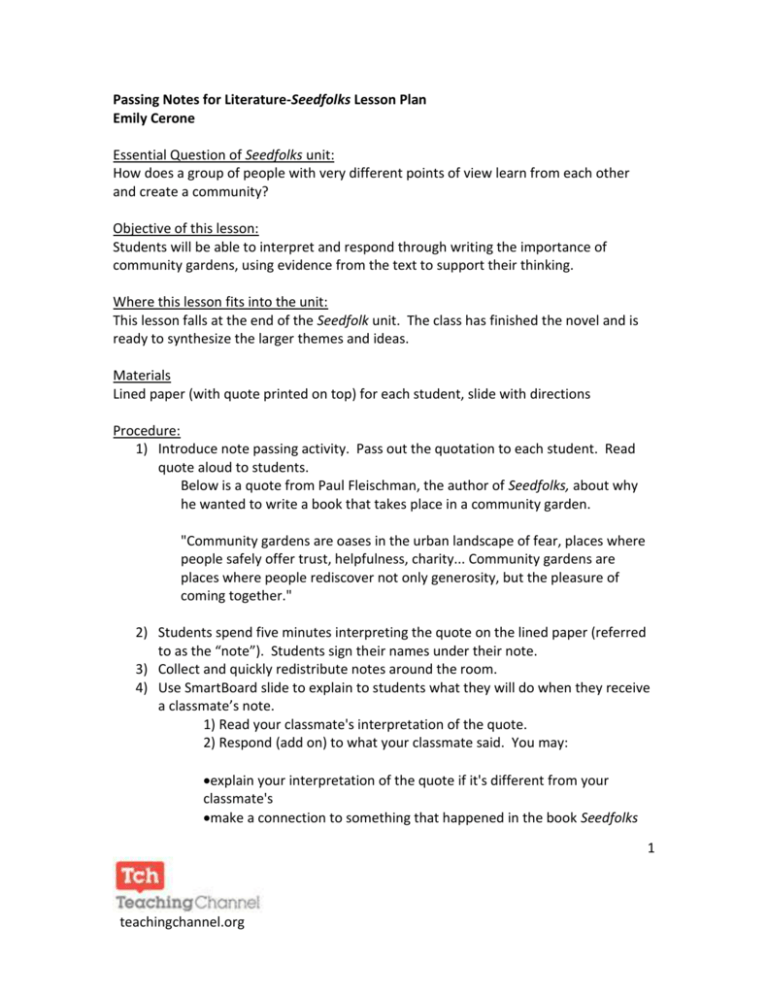
Passing Notes for Literature-Seedfolks Lesson Plan Emily Cerone Essential Question of Seedfolks unit: How does a group of people with very different points of view learn from each other and create a community? Objective of this lesson: Students will be able to interpret and respond through writing the importance of community gardens, using evidence from the text to support their thinking. Where this lesson fits into the unit: This lesson falls at the end of the Seedfolk unit. The class has finished the novel and is ready to synthesize the larger themes and ideas. Materials Lined paper (with quote printed on top) for each student, slide with directions Procedure: 1) Introduce note passing activity. Pass out the quotation to each student. Read quote aloud to students. Below is a quote from Paul Fleischman, the author of Seedfolks, about why he wanted to write a book that takes place in a community garden. "Community gardens are oases in the urban landscape of fear, places where people safely offer trust, helpfulness, charity... Community gardens are places where people rediscover not only generosity, but the pleasure of coming together." 2) Students spend five minutes interpreting the quote on the lined paper (referred to as the “note”). Students sign their names under their note. 3) Collect and quickly redistribute notes around the room. 4) Use SmartBoard slide to explain to students what they will do when they receive a classmate’s note. 1) Read your classmate's interpretation of the quote. 2) Respond (add on) to what your classmate said. You may: explain your interpretation of the quote if it's different from your classmate's make a connection to something that happened in the book Seedfolks 1 teachingchannel.org make a connection to someone you “met” in Seedfolks make some sort of personal connection to the quote 5) Set timer for 4-5 minutes. Students read and respond to the note they’ve been given. Students sign their names under their note. 6) Redistribute the notes around the room again. 7) Set timer for 4-5 minutes. Students follow the same directions a second time: read the note so far and add onto it. Encourage students to respond and add on to what their new note is discussing, so that the note becomes an organic, written conversation among classmates. Students sign their names under their note. 8) Return the notes to their original owners. Students read their own note and everything that has been added below. 9) Brief class discussion. Potential questions: Who has a comment on their note that is interesting or insightful? Who would like to share something that a classmate added to your note that made you think about the quote in a new way? What part of Seedfolks did you discuss in the note that supports this idea that community gardens encourage trust, helpfulness, and generosity? Which characters in Seedfolks came up in your note? Why? 2 teachingchannel.org

